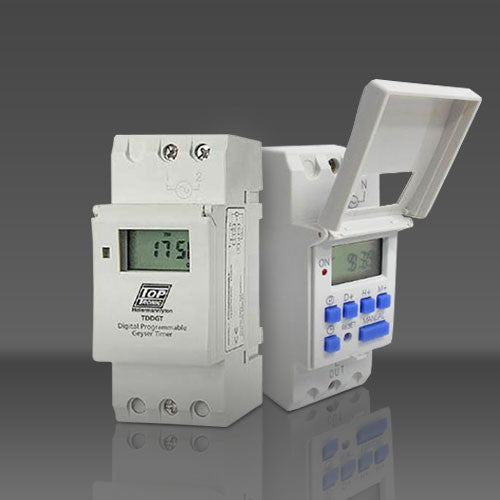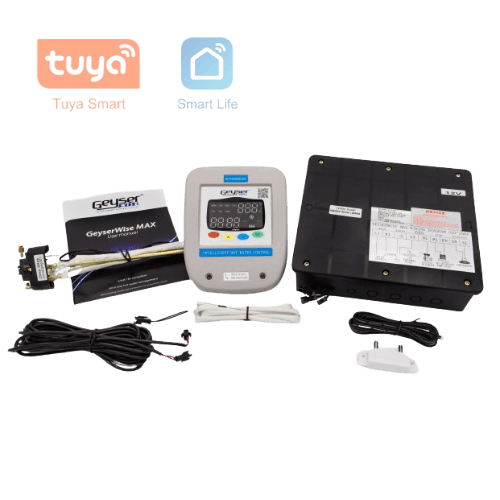Comprehending the Common Issues Linked With Geyser Timers for Efficient Water Heating
The efficient performance of hot spring timers is important for optimizing water home heating effectiveness, yet customers often experience a variety of usual concerns that can endanger performance. Malfunctions, incorrect setups, and compatibility difficulties are just a few of the challenges that can emerge, potentially resulting in boosted energy expenses and reduced dependability. Power supply variances and the requirement for routine maintenance can make complex issues better. Recognizing these variables is key to guaranteeing that geyser systems operate at their ideal, welcoming a better evaluation of the solutions that can address these prevalent problems.
Usual Breakdowns

One prevalent malfunction is the failure of the timer to start heating cycles. This can take place as a result of electrical problems, such as a blown fuse or malfunctioning electrical wiring, preventing the timer from obtaining power. An additional common problem is inconsistent temperature law; the geyser may stop working or get too hot to warm water sufficiently. This can be credited to a malfunctioning thermostat or sediment accumulation within the storage tank, protecting the burner.

Incorrect Timer Setups
Misconfiguration of timer settings is a common concern that can cause considerable inadequacies in hot spring operation. When timers are set improperly, they may trigger the geyser at suboptimal times, leading to either insufficient heating of water or too much energy intake. If the timer is programmed to turn on throughout peak electrical energy hours, it not just pumps up energy expenses however also leads to unneeded strain on the electrical infrastructure.
Moreover, incorrect timer setups can interrupt the schedule of hot water when required - geyser timer. An inadequately set up routine might leave households without warm water during optimal usage periods, triggering aggravation and stress. Conversely, continual procedure as a result of misconfigured timers can cause getting too hot, damaging the geyser and raising upkeep costs
To minimize these concerns, routine checks and updates of timer settings are crucial. Customers must acquaint themselves with their hot spring's heating needs and adjust the timer to line up with their certain demands. Carrying out an easy to use organizing system can better enhance this process, guaranteeing optimal performance and making the most of power effectiveness. Correctly configured timer setups inevitably add to a more affordable and lasting water home heating solution.
Compatibility Issues
Compatibility issues can considerably impact the efficiency of geyser timers, especially when integrating with various heater or smart home modern technologies (geyser timer). Several hot spring timers are developed to collaborate with details kinds of hot water heater, such this page as resisting burner or gas-fired systems. If a timer is not suitable with the heater, it may not function correctly, bring about inefficient water heating and even damages to the system
Additionally, as wise home innovation continues to develop, the integration of hot spring timers with home automation systems can posture challenges. Not all hot spring timers provide the very same level of connectivity, which can hinder their capacity to connect successfully with wise centers or mobile applications. Individuals may find themselves incapable to manage their geyser timers from another location or set routines that straighten with other wise tools in their home.
Moreover, the compatibility of hot spring timers with existing electric infrastructure can additionally be a worry. Variations in voltage ratings, electrical wiring criteria, and circuit arrangements can result in functional problems. Consequently, it is crucial to thoroughly evaluate compatibility with both the heating equipment and the home's electric system before choosing a hot spring timer to guarantee optimal efficiency.
Power Supply Troubles
Power supply problems can significantly prevent the performance of geyser timers, resulting in unreliable operation and increased power expenses. These issues might come from inadequate voltage supply, inconsistent source of power, or damaged electrical wiring. A hot spring timer requires a steady electric input to operate optimally; variations can result in unpredictable performance or total failing.
Moreover, inaccurate voltage scores can damage the timer, making it inoperative. It is critical to make certain that the hot spring timer works with the electrical specifications of the installment website. Furthermore, power rises or disturbances can disrupt the timer's programming, bring about inefficient heating cycles and unanticipated operational delays.
In some cases, the placement of the geyser timer might likewise contribute to power supply challenges. If installed too far from the primary power source, voltage decline can happen, affecting efficiency. Normal tracking of the electrical system and timely recognition of any kind of anomalies can mitigate these issues. In circumstances of persistent power supply issues, getting in touch with a certified electrical contractor is suggested to make certain that the electric framework effectively sustains the geyser timer's needs. Correct attention to power supply can enhance the effectiveness and longevity of the hot spring timer system - geyser timer.
Maintenance and Troubleshooting
Normal upkeep and troubleshooting are important for making sure the reliable operation of hot spring timers. Frequently clean the timer unit and bordering see post locations to prevent dust accumulation, which can interfere with its operation.
If issues develop, start troubleshooting by resetting the timer to its default settings. Verify the power supply to ensure the timer is receiving adequate voltage.
In addition, consider organizing specialist examinations every year to address prospective concerns proactively. This approach can prolong the lifespan of the hot spring timer and optimize its performance. By focusing on upkeep and efficient troubleshooting, individuals can minimize common troubles and ensure constant performance from their hot spring timers.
Conclusion
In conclusion, acknowledging and dealing with the common problems associated with hot spring timers is crucial for maximizing water home heating effectiveness. Timer breakdowns, wrong settings, compatibility challenges, and power supply issues can dramatically affect efficiency.
The effective performance of geyser timers is important for maximizing water home heating effectiveness, yet individuals frequently run into an array of common concerns that can endanger performance. When timers are set incorrectly, they might activate the hot spring at suboptimal times, resulting in either inadequate home heating of water or extreme power intake.Compatibility issues can significantly influence the efficiency of geyser timers, especially when incorporating with various home click for more heating systems or smart home technologies. Many hot spring timers are designed to function with particular types of water heaters, such as repellent heating elements or gas-fired systems.In final thought, recognizing and dealing with the typical concerns connected with hot spring timers is crucial for enhancing water heating performance.